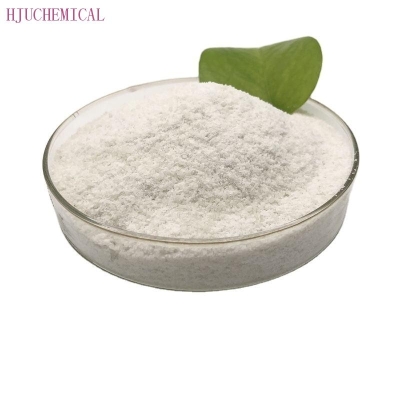-
Categories
-
Pharmaceutical Intermediates
-
Active Pharmaceutical Ingredients
-
Food Additives
- Industrial Coatings
- Agrochemicals
- Dyes and Pigments
- Surfactant
- Flavors and Fragrances
- Chemical Reagents
- Catalyst and Auxiliary
- Natural Products
- Inorganic Chemistry
-
Organic Chemistry
-
Biochemical Engineering
- Analytical Chemistry
- Cosmetic Ingredient
-
Pharmaceutical Intermediates
Promotion
ECHEMI Mall
Wholesale
Weekly Price
Exhibition
News
-
Trade Service
Article source: Scientology in China? The research group of Professor Chi Lifeng of Soochow University and Professor Rosei of the National Academy of Sciences of the University of Quebec collaborated to synthesize rocking chair graphene nanoribbons on the surface of Cu(111) through boundary polymerization.
The effect of –H bond activation, the introduction of oxygen reduces the reaction temperature by 180°C
.
? As an effective method for synthesizing one-dimensional and two-dimensional polymers with atomic resolution, surface in-situ synthesis has received more and more attention in recent years
.
Among them, graphene nanoribbons (GNR), as a quasi-one-dimensional nanomaterial derived from graphene, has received extensive attention due to its adjustable electronic properties and potential applications in semiconductor devices
.
? During 2007-2009, a series of top-down methods were applied to the synthesis of GNR
.
However, due to the inability to effectively control the width and boundary structure of the nanoribbon, its development has been limited
.
It was not until 2010 that the Roman Fasel research group reported the synthesis of rocking chair graphene nanoribbons (AGNR) with atomic-resolution structures on the surface of Au(111) through a bottom-up method
.
The main mechanism of this method includes thermally excited dehalogenation reaction, surface assisted polymerization reaction and final dehydrocyclization reaction
.
? In the next ten years, this bottom-up approach was further applied to the synthesis of different GNRs, including rocking chair GNRs of different widths, zigzag GNRs, GNR heterojunctions, chiral GNRs, and chemical doping GNR
.
However, so far, only a few articles have reported the synthesis of graphene nanoribbons on Cu(111) surface
.
However, for the same precursor molecules, nanoribbons of different shapes are formed on the surfaces of Cu(111) and Au(111), which means that the surface of the single crystal has an important influence on this reaction
.
On the other hand, the introduction of different atoms in the synthesis of surface confinement has not been extensively studied
.
It is reported in the literature that iodine atoms introduced from the outside can intercalate into the two-dimensional polymer and the Ag(111) surface, thereby blocking the coupling effect of the metal substrate on the surface material.
.
In addition, the introduction of hydrogen atoms and hydrogen sulfide will also have an important influence on the surface Ullman coupling reaction
.
The author has reported that oxygen atoms can induce the transformation of metal-organic coordination structures from one-dimensional to two-dimensional
.
However, the introduction of different atomic phases in the synthesis of GNR has not yet been carried out
.
? In this work, Chi Lifeng's team studied the effect of oxygen on the synthesis of graphene nanoribbons
.
First of all, based on the experience of the same organic precursor Br-(ph)3-Br successfully through the boundary polymerization on the Au(111) surface to obtain the 3P series AGNR, it is proved that this precursor can also be thermally excited on the Cu(111) surface.
Synthesize AGNR
.
Different from the results on the Au(111) surface, the by-product bromine atoms proved to be intercalated between the nanoribbons and the Cu(111) surface
.
After the formation of 3-AGNR by Ullman coupling, an appropriate amount of oxygen is introduced to the Cu(111) surface through the vacuum micro-leak valve, and the oxygen will quickly decompose and exist on the Cu(111) surface in the form of oxygen atom chemical adsorption or copper oxidation state.
.
When the sample is heated to 453 K, 3P series AGNR is generated, which is 180°C lower than the synthesis temperature (633 K) in the absence of oxygen
.
In this reaction, the main role of oxygen is to catalyze the C–H bond at the 3-AGNR boundary, which in turn promotes the boundary dehydrocyclization polymerization (see the figure below)
.
?? This work not only realizes the synthesis of AGNR by boundary polymerization on the Cu(111) surface, but also has guiding significance for the study of surface C–H bond activation reaction, and promotes the precise synthesis of more surface nanostructures
.
The first author of the thesis is Ji Penghui, a Ph.
D.
jointly cultivated by Soochow University and the National Academy of Sciences of the University of Quebec.
The corresponding authors are Professor Chi Lifeng, Professor Federico Rosei, and Dr.
Oliver MacLean
.
The effect of –H bond activation, the introduction of oxygen reduces the reaction temperature by 180°C
.
? As an effective method for synthesizing one-dimensional and two-dimensional polymers with atomic resolution, surface in-situ synthesis has received more and more attention in recent years
.
Among them, graphene nanoribbons (GNR), as a quasi-one-dimensional nanomaterial derived from graphene, has received extensive attention due to its adjustable electronic properties and potential applications in semiconductor devices
.
? During 2007-2009, a series of top-down methods were applied to the synthesis of GNR
.
However, due to the inability to effectively control the width and boundary structure of the nanoribbon, its development has been limited
.
It was not until 2010 that the Roman Fasel research group reported the synthesis of rocking chair graphene nanoribbons (AGNR) with atomic-resolution structures on the surface of Au(111) through a bottom-up method
.
The main mechanism of this method includes thermally excited dehalogenation reaction, surface assisted polymerization reaction and final dehydrocyclization reaction
.
? In the next ten years, this bottom-up approach was further applied to the synthesis of different GNRs, including rocking chair GNRs of different widths, zigzag GNRs, GNR heterojunctions, chiral GNRs, and chemical doping GNR
.
However, so far, only a few articles have reported the synthesis of graphene nanoribbons on Cu(111) surface
.
However, for the same precursor molecules, nanoribbons of different shapes are formed on the surfaces of Cu(111) and Au(111), which means that the surface of the single crystal has an important influence on this reaction
.
On the other hand, the introduction of different atoms in the synthesis of surface confinement has not been extensively studied
.
It is reported in the literature that iodine atoms introduced from the outside can intercalate into the two-dimensional polymer and the Ag(111) surface, thereby blocking the coupling effect of the metal substrate on the surface material.
.
In addition, the introduction of hydrogen atoms and hydrogen sulfide will also have an important influence on the surface Ullman coupling reaction
.
The author has reported that oxygen atoms can induce the transformation of metal-organic coordination structures from one-dimensional to two-dimensional
.
However, the introduction of different atomic phases in the synthesis of GNR has not yet been carried out
.
? In this work, Chi Lifeng's team studied the effect of oxygen on the synthesis of graphene nanoribbons
.
First of all, based on the experience of the same organic precursor Br-(ph)3-Br successfully through the boundary polymerization on the Au(111) surface to obtain the 3P series AGNR, it is proved that this precursor can also be thermally excited on the Cu(111) surface.
Synthesize AGNR
.
Different from the results on the Au(111) surface, the by-product bromine atoms proved to be intercalated between the nanoribbons and the Cu(111) surface
.
After the formation of 3-AGNR by Ullman coupling, an appropriate amount of oxygen is introduced to the Cu(111) surface through the vacuum micro-leak valve, and the oxygen will quickly decompose and exist on the Cu(111) surface in the form of oxygen atom chemical adsorption or copper oxidation state.
.
When the sample is heated to 453 K, 3P series AGNR is generated, which is 180°C lower than the synthesis temperature (633 K) in the absence of oxygen
.
In this reaction, the main role of oxygen is to catalyze the C–H bond at the 3-AGNR boundary, which in turn promotes the boundary dehydrocyclization polymerization (see the figure below)
.
?? This work not only realizes the synthesis of AGNR by boundary polymerization on the Cu(111) surface, but also has guiding significance for the study of surface C–H bond activation reaction, and promotes the precise synthesis of more surface nanostructures
.
The first author of the thesis is Ji Penghui, a Ph.
D.
jointly cultivated by Soochow University and the National Academy of Sciences of the University of Quebec.
The corresponding authors are Professor Chi Lifeng, Professor Federico Rosei, and Dr.
Oliver MacLean
.







